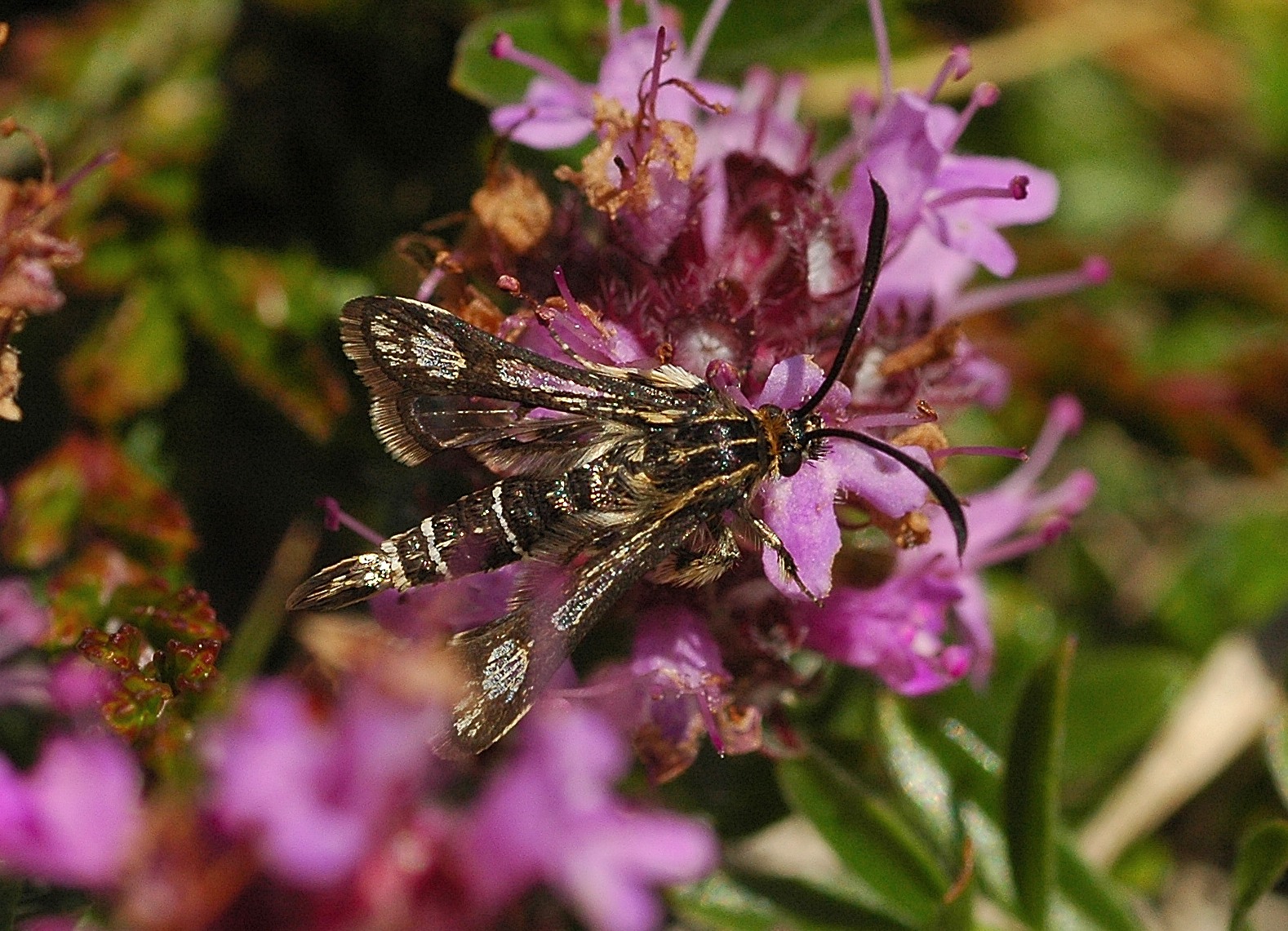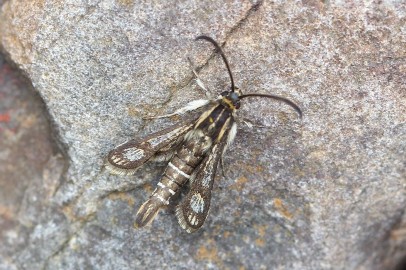See also Moth of the Week (21/06/2019) and Moth of the Week (20/06/2023).
Identification
The smallest clearwing, with three longitudinal yellowish stripes on the thorax and three or four narrow yellowish-white bands on the abdomen.
Recording Method.
A day-flying moth but rarely seen. Easily mistaken for a fly or other small insect. Males are readily attracted to pheromone lures.
Life cycle
One generation. Overwinters as a part-grown larva. Larva August to May, feeding in the roots and stems of Thrift.
Larval foodplants
Thrift.
Habitat
Rocky coastlines where Thrift is present.
History
Robinson-Douglas (1870-71) had found the larvae abundant on Thrift along the coast in July. He also recorded finding an injured pupa. Francis Buchanan White of Perth (1895) found it not uncommon on the rocky coast where Thrift grows. He noted Colvend (VC73) as the first Scottish locality, it still remaining the chief site for this local moth.
Gordon (1913) under A. philanthiformis stated that two were taken by Hugh McDowall on cliffs at Portpatrick in 1886.
From 1995 to 2005 there were a further twenty records, all at coastal localities, but none from Dumfriesshire.










